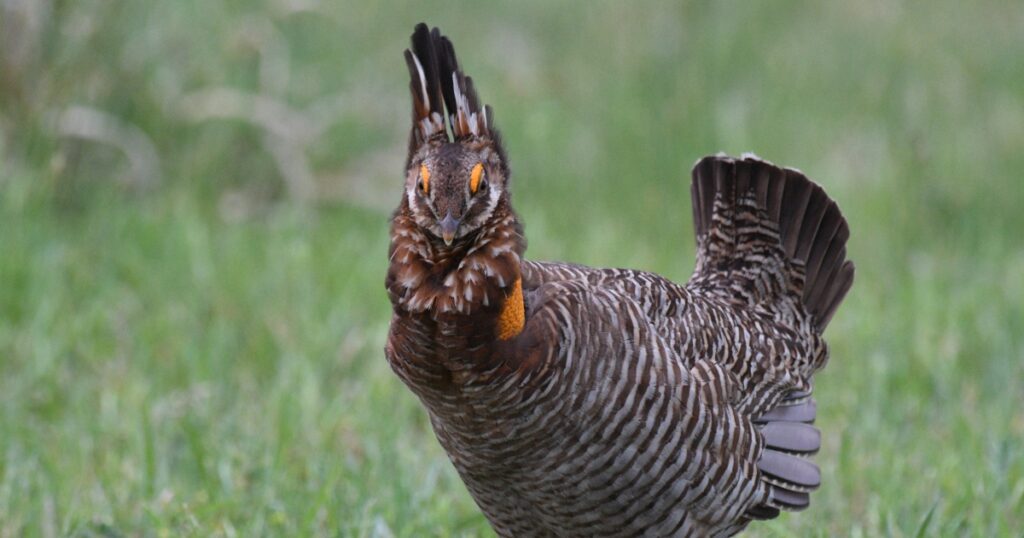The Attwater’s Prairie Chicken (Tympanuchus cupido attwateri) is a critically endangered subspecies of the greater prairie chicken, native to the coastal prairies of southeastern Texas and southwestern Louisiana. Here’s an overview:

🐦 Overview
- Scientific Name: Tympanuchus cupido attwateri
- Family: Phasianidae (pheasants, grouse, and allies)
- Status: Critically Endangered
- Historic Range: Coastal prairies of Texas and Louisiana
- Current Range: Very limited—primarily in Texas (notably on preserves like the Attwater Prairie Chicken National Wildlife Refuge)
🔍 Description
- Size: Medium-sized, chicken-like bird
- Plumage: Mottled brown, black, and buff
- Distinctive Features:
- Males have bright orange air sacs on the sides of their necks used during mating displays.
- They perform a “booming” call and dance to attract females in spring.

🌾 Habitat
- Preferred Habitat: Coastal tallgrass prairies
- Habitat Loss: More than 98% of its native habitat has been lost due to:
- Urban development
- Agricultural conversion
- Fire suppression
📉 Population Status
- At one point, the population fell below 50 birds in the wild.
- Captive breeding and reintroduction programs are ongoing, with support from:
- U.S. Fish and Wildlife Service
- Zoos (e.g., Houston Zoo)
- Conservation groups
⚠️ Threats
- Habitat destruction
- Predation (especially on nests and chicks)
- Weather events (like flooding or drought)
- Invasive species (e.g., fire ants impacting insect availability)
🛡️ Conservation Efforts
- Captive Breeding Programs
- Habitat Management:
- Prescribed burns
- Grazing management
- Nest Protection and Predator Control
- Public Education and Advocacy

📍 Notable Conservation Site
Attwater Prairie Chicken National Wildlife Refuge
- Location: Near Eagle Lake, Texas
- Purpose: Habitat preservation, public education, and reintroduction of captive-bred birds.
Would you like more details about conservation programs, population data, or where to see them in the wild?